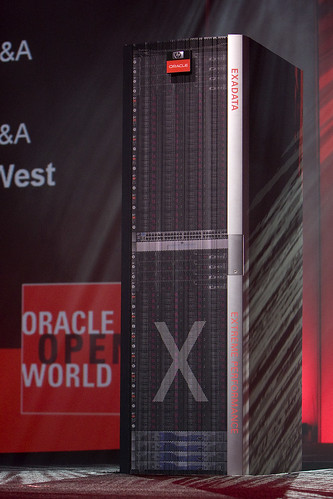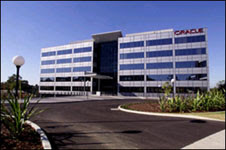Tuesday, March 31, 2009
The Light Bulb Effect interviews Jeff Kennedy
And on the SOA meme Jeff has this to say, "It is essential to recognise that SOA is a journey... and that SOA has a value proposition that cannot be realised for years to come... but that it's going to be vastly worthwhile."
I totally agree. As we've said before around these parts SOA is not dead, it's a journey, and there's a "vastly worthwhile" benefit along the way.
-sean
Tuesday, March 24, 2009
Breathing Life into Applications with Middleware
I would like to add further commentary on what the authors stated.
Businesses have, for the most part, invested heavily in acquiring and building applications to assist them in driving business efficiencies. With the widespread adoption of ERP though, I feel that differentiation has begun to fade. So maybe the question we could ask ourselves is, what can we do today to deliver rapid value, utilising existing applications investments, and provide a sustainable platform for future growth? In addressing the challenge above, a number of key organisations I know of are reevaluating the role middleware performs in their architectures. They have achieved remarkable short-term results in areas such as consolidation and business process efficiencies, while at the same time underpinning their broader business transformation strategies.
Cost reduction through consolidation is high on the priority list of CIO’s. Adopting a service-oriented approach can support application consolidation. By identifying key business services delivered by existing applications and key processes that will drive business value, organisations can determine which of their applications they can retire, retain, or build out to agile composite applications.
Replacing expensive and unmanageable point-to-point integration with reusable services can further reduce architectural complexity and associated costs, allowing for more effort and funding to be injected into projects that would contribute towards the differentiation of the business.
In the longer term, application upgrades prove to be costly due to the level of customisation and extension conducted during its lifespan. Moving an application to a major point release could cost 20% (see document under whitepapers) of the original implementation cost. Performing customisations in an upgrade resilient services layer supports application upgrade pain reduction!
To hear more about how middleware can support and enhance your applications investment, our Oracle Australia team, together with our customers, will be delivering sessions at this years Oracle User Group in Sydney on the 20th and 21st April. I will be there too! Together will Debra Lilley, an Oracle ACE from the UK, we will discuss and demonstrate how businesses can use process management to facilitate transformation and how easy it is to extend your Oracle applications using Oracle BPEL Process Manager. See you there!
Friday, March 13, 2009
First thoughts on the Oracle Database Machine in Australia
In this tough economic climate its no surprise that every organisation wants to drive cost out of the business, in the front end and especially at the back end. The DBM couldn't have arrived at a better time to the market for our customers, here is an appliance datawarehouse designed for massive throughput from loading data, executing queries and presenting the important business intelligence back to the business. Speed in everything is essential but speed alone doesn't reduce costs, the real value in the DBM is the fact its an appliance. This is underrated IMHO especially now in this economic cliamate.
This week i needed to re image my laptop, Oracle gives you the option of Linux or Windows and being a secret techno i thought i would give Linux a try. Now i used to dabble in Unix but it was 20 years ago, and i was hoping not to venture near the text based utility vi. Anyway Linux did install pretty easy, actually i was surprised but then when i wanted to tailor it with dual head display, tool bars, gadgets, desktop search and adobe air for tweekdeck (the coolest twitter app) i suddenly realised all is not what it seemed. Suddenly i was thrust upon with desperate searches to see how to install RPM/BIN and remembering syntax for commands that mean nothing to me like chmod, bash and sudo. Wow i cant tell you how many hours i have sat at home getting this just right. Its hard since building Linux desktops isn't my profession so i wasted a lot of time taking in the knowledge of configuring a Linux.
This now takes me back to the appliance concept and specifically the DBM. Customers initially look at this box and dont appreciate the sum of the parts is far greater than any bill of materials can suggest. The DBM contains 8xHP DL360's, 14 Exadata Storage Cells with 12 disk in each, Infiniband,Oracle Unbreakable Linux, Enterprise Edition Database, RAC and Partitioning. So if you wanted an new warehouse and went to the effort of procuring the hardware, software and then looked and building the hardware units, loading drivers, os, database, RAC and ensuring its all up to date you are talking abut serious hours here. And in reality for most organisations its months not hours because your never going to dedicate resourcing 100%.
In these economic times we need to look at efficiency and productivity closer than ever. IT departments are there to make sure the user community and the business have the tools at their disposal to be productive, to automate repeatable processes and build a secure and compliant infrastructure. Its such a drain on resources to build a linux desktop as in my case or to procure a crate of hardware and a library of software to build something when you can just plug in an appliance.
The DBM offers great value when you consider Oracle with HP has done all this work for you, you can then focus on getting the most out of your new datawarehouse with new queries for the business, better ETL performance and headroom to cover the expected growth when the world recovers.
So today i have just touched on the appliance value of the Database Machine, over the next few weeks i will look at what really makes this box scream. The "Secret Sauce" will be my next post when i will discuss how the Storage Cells in the Database Machine are accelerating customers queries by factors over x100 times.


The Oracle Database Machine
Wednesday, March 4, 2009
Project Management Pitfalls within SOA
Project Managers: Know thy SOA
I have come across very few people that have really understood that SOA is not about solving an integration problem, but really about solving some very fundamental business issues (e.g. business agility, reduced maintenance cost, visibility of information, etc). Once people understand how a Services Orientated Architecture (with the focus on Architecture) is able to do this, their whole approach to implementation is changed. This is not rocket science but so few project managers (and customers) really understand this and it often leads to a host of SOA Implementation failures. For those of you that are still in the dark, I would urge you to have a look at the following SOA Video on YouTube.
Not understanding the principles of SOA by Project Managers often results in the following 2 key SOA Project Management mistakes. Now there are plenty more, but these are really fundamental to most issues:
Mistake 1: SOA without the Architecture
I can recall many Oracle Application projects, where I have been called in to help the team with their SOA implementation. On arrival at the site it becomes very apparent that this “SOA thing” is being equated to solving their integration issues. The Project manager also typically thinks that they are delivered on their SOA project commitments through the service enablement of the integration touchpoints. In my mind this is a BIG mistake, a massive opportunity loss for the customer and an outright project failure. On these projects rather than creating an architecture where common functionality (e.g. Credit Checking, Creation of an unique Customer across the organisation), business rules and information is available for all to use across applications and the organisation, they are perpetuating another silo’ed implementation that offers very little in terms of business agility and flexibility.
Below is a small checklist that you can go through to determine if your SOA project may not be using SOA architectural principals:
- Your integration team has never seen the business process that their integration code is suppose to support.
- No one is insisting on common functionality to be made available to the rest of the organisations.
- No one is fighting about ownership of data (e.g. customers, products, assets) or who is going to pay for the development of the service.
- No one is asking about the service lifecycle management.
- There are no canonical data models.
Mistake 2: Silo’d Teams
Having worked on many SOA projects, the most successful SOA projects that I have seen, typically follows a more Agile approach to project management (typically using Scrum). I believe the reason why this approach works so well on SOA projects is because it allows people across the project to rally around a particular activity (or business process) and provides the framework for rapid iterative development. This allows all the developers and business users to collaboratively work together to get the task at hand completed and breaks the traditional boundaries between the development communities (SOA Developers, Legacy Developers, Oracle Applications Developers, etc). Although this sounds easy enough, it is actually very difficult when you consider that many of your resources may be working off-shore and in different timezones and that communication issues across geographies are plenty. However these communication barriers have to be broken down for your SOA project to be successful and the communication to flow freely between team members.
Tuesday, March 3, 2009
Oracle Web2.0 Event PodCasts
To listen to the recordings from the event, please select the session below.
Paul

